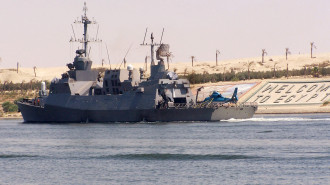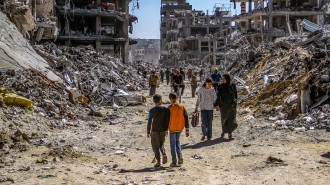Bangladeshi forests stripped bare as Rohingya refugees battle to survive
That jarring contrast in Bangladesh's landscape is new. It's an indirect consequence of brutal military operations in Myanmar that forced 650,000 Rohingya refugees into the country, the majority since August 2017. Most of their journeys have involved witnessing horrendous atrocities, flight from burning villages, and then stumbling through forests or battling monsoon-charged waters in search of safety.
Along the way, they pitched camp wherever they found space and turned to the local forest for everything from shelter to fuel. Satellite images show a clear difference in forest cover between October 2016 and November 2017 that looks similar to the aftermath of clear-cutting. They continue to rely on the forest in Bangladesh.
As the refugees poured in through various points along the border, the Bangladeshi military tried to round them up around the existing Kutupalong and Balukhali settlements - in such numbers that they merged into the world's largest refugee camp.
The weight and rate of that influx has created an additional environmental crisis in Bangladesh's sensitive border district, stripping away 4,000 acres of forest land, according to numbers from an internal Bangladesh forestry department report shared with Mongabay.
Crucial groundwater supplies have also been depleted and contaminated, according to the World Health Organization.
It is a crisis borne of chaos that has not only tipped a delicate balance on Bangladesh's water-scarce and cyclone prone southeastern tip but also accentuates the humanitarian challenges for both refugees and an overwhelmed local population.
There are now almost one million refugees, including those from previous influxes, living in an area hit by cyclones in each of the past three years and where, in the worst parts, refugees say they have to live on two pots of water a day.
"It was like a jungle, all of this. There were trees and fruit plantations," said Rehana Begum, a local Bangladeshi whose home now lies in the middle of the mega-camp. "Now there are so many homes here but they only appeared over the last two or three months."
 |
They are cutting down the hills, they're chopping all the trees, herbs, shrubs then erecting their shelters. As a result, the topography of that area has been greatly damaged |  |
Those homes are simply tarpaulin sheets fastened to bamboo poles and pinned into patches of earth the refugees hacked from the hills. From inside the Kutupalong-Balukhali camp, the lines of those tents and hills they cling to are impossible to see past - a sea of dust and plastic that repeats into the horizon, scarcely a tree in sight.
Satellite imagery provides a startling overview of those 1.5 square miles (four square kilometers): from August 2017 onward, Kutupalong's brown mass creeps steadily outward, eating farther into the government's Teknaf Game Reserve that surrounds it, until it joins with the smaller Balukhali camp to the south.
"From the late seventies, whenever the Rohingya people came to Bangladesh, they settled down in Teknaf and Ukhia areas and basically in forest land, as there is no [other] available space in those areas," said Ali Kabir, the Bangladeshi forestry department's officer for Cox's Bazaar South, the district under which the Kutupalong-Balukhali camp falls.
While the Muslim minority from Myanmar's western Rakhine state have previously fled to Bangladesh in the tens of thousands after operations by the Burmese military in 1978, 1991 and with increasing frequency over the past 10 years, the most recent influx, and corresponding changes, have been far more intense.
"They are cutting down the hills, they're chopping all the trees, herbs, shrubs, then erecting their shelters. As a result, the topography of that area has been greatly damaged," Kabir said.
The view by satellite also shows a not-quite-browned but visibly thinning ring of green around the camps, especially to the west.
| Slide the central tab to see the difference in forest cover between October 2016 and November 2017 |
Increasing needs
It is from the west that every day, all day, a constant stream of Rohingya men, as well as some women and children, are found wading through puddles, bowed under the loads of firewood each has to go hunting for several times a week. Eight hundred tons of fuel wood are now needed daily, according to the UN's Food and Agriculture Organization (FAO).
The sheer weight of that demand created by the refugees in just the Kutupalong-Balukhali camp's surroundings - and more spread through other camps - has forced the forests to rapidly recede. And demand is only set to increase, with thousands of babies due to be born here in the coming months.
The camp's overwhelming brownness does gradually give way to more greenery on foot-beaten paths that lead away from it, but mile upon mile of vestigial tree stumps and scythed-down shrubbery offer no more than a hint of how far the forest has retreated. What had been a six-mile round trip when the newest Rohingya refugees first arrived has doubled into 12 miles, with entire days spent walking and cutting trees.
 |
|
| Rohingya refugees have turned to the forest to find basic resources [Kaamil Ahmed/Mongabay] |
The route winds on and on, offering no shade from the Bangladeshi dry season's unfiltered sun.
Everywhere there is either someone carrying loads or sat down by the side on one of the numerous breaks they have to take. Barefoot, both men and women wrap themselves in simple pieces of cloth, known as lungis, paired with a vest or blouse and no protection from the elements.
Few carry water and some even drink from muddied puddles created a few days earlier by unexpected rains.
"I don't know how to count the miles I'm walking but I start very early in the morning and get to the forest by about 10 o'clock," said Ayub Ali, who fled Maungdaw township in Myanmar in September. He spends an hour hacking away at the trees with his machete, the universal tool of Rohingya and Bangladeshi villagers, before ambling his way home, resting regularly by leaning against a stack of branches taller than himself.
Now in his 60s, Ali has never before had to actually collect wood but now makes the arduous journey two or three times a week. Few of the refugees recall ever having to do such work in Myanmar, where they would simply buy wood or gas from local suppliers.
With the search for firewood becoming more strenuous and many worried about what they will do when the impending cyclone season adds extra challenges and strains, some Rohingya appear to be stockpiling the treasured commodity.
While most houses have branches drying out on their roofs, some have stacks taking up whole corners of their homes.
Around 1,000 football fields' worth of timber would be needed to supply the refugees for a single year, according to Graham Eastmond, who co-ordinates the shelter sector for the international humanitarian response.
 |
|
| Many of those sent to collect firewood are children [Kaamil Ahmed/Mongabay] |
Many out collecting firewood are children, some with adults but others sent along with siblings and friends by parents who also have to make sure they are in the camps to collect their aid supplies - which usually offer no alternative fuel on which to cook.
Not everyone is able to walk the whole way, especially some of the youngest children. Instead, they can be found along the route, or even in the camp itself, hacking at the ground to free left-behind tree stumps or pulling at wiry roots - a task almost as tedious as the longer journey because of how little fuel they can scavenge.
A lot of that fuel also poses health risks for the refugees as it produces more smoke, which becomes trapped in their confined living spaces.
"When they're cooking green fuel, they're going to get sicker a lot faster; eye infections, respiratory infections," said an environmental consultant involved in the emergency response, who could not be named as he was not cleared to speak to media.
"It's just really unhealthy to be cooking on green wood and its worse for the forest too because if you're cooking green wood, it means you're cooking on the last of it."
The majority of deforested land has been government-owned, according to forestry official Kabir. Almost half of that land was part of the 15-year-old government Social Forestry Program - now decimated.
The programme relied on public land and quick-growing trees that could, within a decade, provide local communities a sustainable income through selling the highly valued timber used for furniture.
"About 2,000 acres of social forestry has been completely destroyed… almost 1,000 poor people are involved in this programme," Kabir said, noting that local Bangladeshis had handed in a petition requesting the government compensate them for the lost land.
"It is continuing, so the area of destruction is increasing day-by-day."
In contrast to previous influxes of Rohingya refugees, many local Bangladeshis have tolerated the Rohingya - if not willingly - at least after prompts by Bangladeshi Prime Minister Sheikh Hasina, but also grumble about how long they will stay.
 |
About 2,000 acres of social forestry has been completely destroyed almost 1,000 poor people are involved in this programme |  |
Rehana Begum, the area resident who saw dozens of refugee families move in around her, said she accepted them as fellow Muslims, but complains about how much the area has changed and even accuses the refugees of stealing from her. But a nearby group of Rohingya say it is not their fault, and there was nowhere else for them to settle.
While there have been genuine concerns for local Bangladeshis about the damage done to the environment and increasing pressure on resources, many do appear to have taken advantage of the situation.
Some refugees have reported Bangladeshis demanding small fees from them while collecting wood or for settling on nearby land, and there are signs of a growing trade in firewood.
 |
|
| Firewood has become an important commodity for Rohingya refugees, who have no alternative sources of energy [Kaamil Ahmed/Mongabay] |
Though Kabir denied any wood was being brought in from outside the camp area, as they have stringent checks for smuggled timber along the route, the signs are there.
Muhammad Araf, 27, is a new arrival in the Balukhali refugee camp and one of the Rohingya who have gone into business buying bundles of wood for about 25 cents each and then selling them for about a 12 cent profit per bundle.
Every morning, small electric buggies carrying bundles of firewood wrapped in red string head for the camps and surrounding villages.
He said it was local Bangladeshis who were bringing the wood in from somewhere north of Kutupalong, though he did not know exactly where. Without the government monitoring it, it is hard to know exactly how much the trade in wood is also affecting the forestry even beyond the camps' immediate surroundings.
WaterThe Cox's Bazaar and Teknaf districts that run along Bangladesh's border with Myanmar have long had problems with water. Usable groundwater supplies in some parts are much deeper than usual, which makes getting to them hard and limits how much can be used in an area that already had around 300,000 Rohingya refugees living in it, mostly from influxes since 1991.
That problem, according to a 2012 study by the University of Dhaka, is caused by a high amount of rainwater running off into the nearby River Naf and Bay of Bengal - a problem expected to be exacerbated by mass deforestation reducing the amount of vegetation to pull water into the underground aquifers. The IUCN also highlighted the region as one of 10 in Bangladesh that are severely vulnerable to saline water from the sea contaminating sweet-water sources locals may otherwise have been able to draw from.
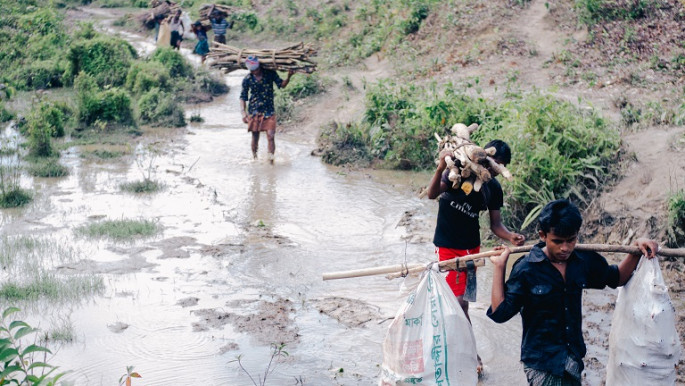 |
|
| Leaking latrines have polluted much of the water used by the refugees [Kaamil Ahmed/ Mongabay] |
"The more water that goes, the less that gets recharged into the aquifers because that water runs right out to the sea. It doesn't trickle down like it's supposed to," said the environmental consultant who asked to have his name withheld.
In the Hakimpara refugee camp, a quarter of shallow tube wells have already dried up, according to aid group Doctors Without Borders.
Adding to the pressure on water supplies is the fallout of a chaotic response to the rapid influx. Latrines were installed hastily to meet one of the fastest movements of refugees in a generation and many were poorly built or not put in the right areas.
Leaking latrines, open defecation and tube wells placed too close to latrines have polluted the groundwater, leading to more than 60 percent of water used by the refugees being contaminated, the WHO warned.
Finding solutionsKabir, the Bangladeshi forestry official, says the easiest solution is to begin repatriating the refugees. While the government has signed an agreement with Myanmar and even submitted a list of the first 100,000 refugees, such a process would be long even if it were not opposed both by international organisations and the refugees themselves, who fear being exposed to exactly the same dangers if returned without their rights being guaranteed.
More realistically, plans are being made to harness existing nurseries and nurture more in order to start reforestation around the camps. Part of that will include eco-terracing - quickly plugging some greenery back into the stripped-down hills to provide some protection against landslides when monsoon rains, and potentially cyclones, hit in the coming months.
 |
|
| Desperate for fuel, the refugees have hacked at the roots of remaining trees [Kaamil Ahmed/Mongabay] |
By using existing nurseries as well as offering cash for work, aid agencies are hoping to involve the local population and ease tensions between the two communities.
They are also hoping to limit how many Rohingya are turning to the forests for firewood by improving the stoves they use and offering alternative fuels like gas or briquettes based on harvested rice husks or coconuts - though some of these options are limited by season.
Eastmond, the shelter coordinator for the international humanitarian response, said the scale of the environmental impact and the discussions they are now having has highlighted how little priority has been placed on providing disaster victims with fuel supplies.
"It should be a sector in itself; it never gets looked at quick enough - that's the argument," he said.
In the meantime, Rohingya refugees such as Sunjuddin, who arrived after an attack on his village in Maungdaw during the Muslim Eid festival in September, said he can see the trees disappearing - but they have no other option.
"This is difficult, it's draining to do this every day," he said. "But we need to eat and there's nothing else to cook on."
Kaamil Ahmed is a foreign correspondent who has reported on conflicts, labour and the environment in South Asia and the Middle East. You can find him on Twitter at@kaamilahmed.
This report was first published by our friends at Mongabay

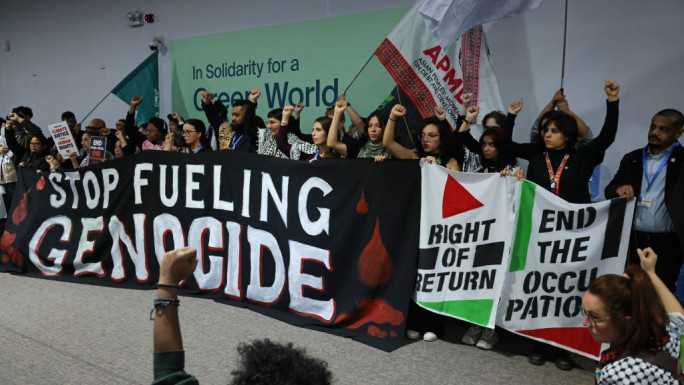

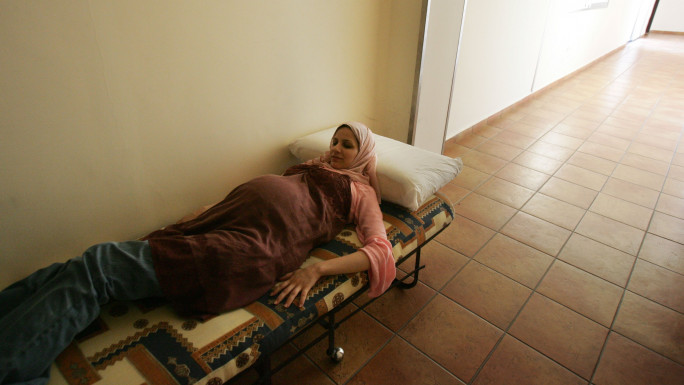

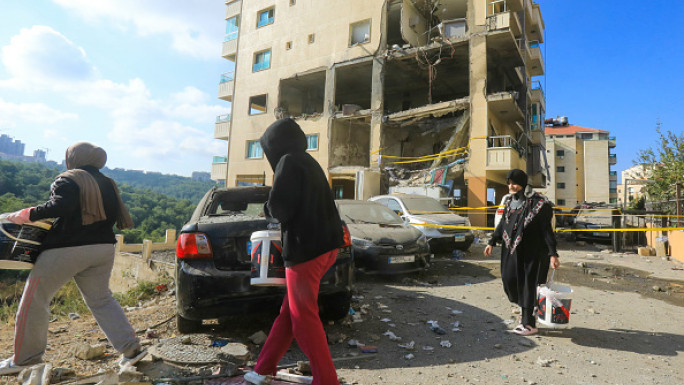
 Follow the Middle East's top stories in English at The New Arab on Google News
Follow the Middle East's top stories in English at The New Arab on Google News

